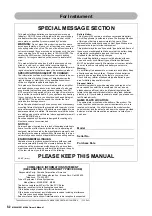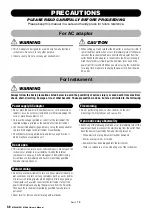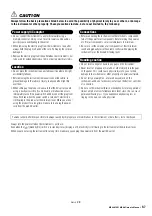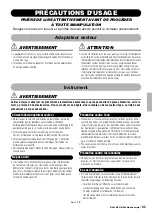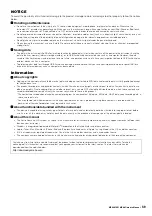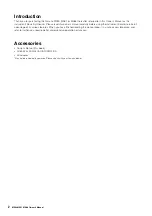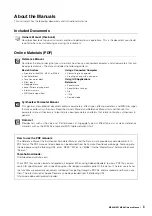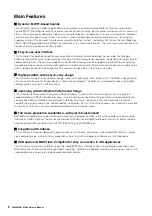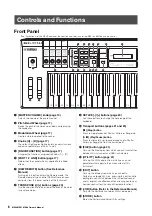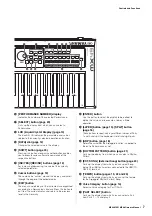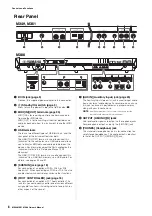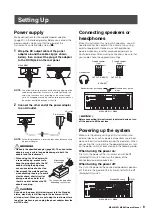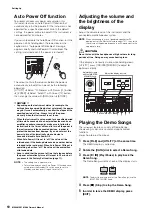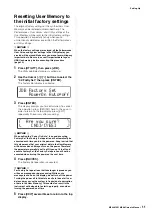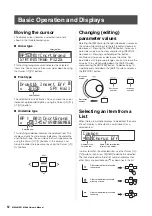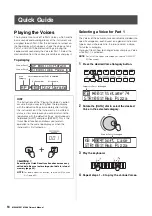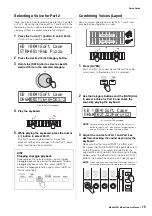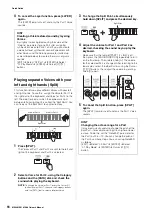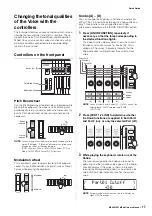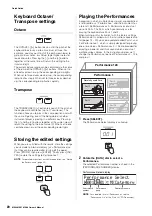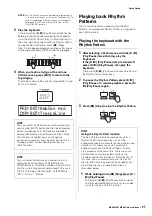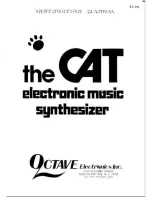
6
MX49 MX61 MX88 Owner’s Manual
Front Panel
1
[MASTER VOLUME] knob (page 10)
Adjusts the volume of the overall sound.
2
Pitch Bend Wheel (page 17)
Bends the pitch of the notes up or down while playing
the keyboard.
3
Modulation Wheel (page 17)
Controls vibrato applied to the sound.
4
Knobs [A] – [D] (page 17)
These four highly versatile knobs let you adjust various
aspects or parameters of Parts 1 and 2.
5
[KNOB FUNCTION] button (page 17)
Changes the functions assigned to Knobs [A] – [D].
6
[PART 1-2 LINK] button (page 17)
Determines the sound which is applied to the Knob
effects.
7
[DAW REMOTE] button (See Reference
Manual)
Turning on this button enters the Remote mode. The
Remote mode lets you control DAW software on your
computer from the panel controls of the instrument.
8
TRANSPOSE [-]/[+] buttons (page 20)
Use these buttons to raise or lower the pitch of the notes
in semitone steps.
9
OCTAVE [-]/[+] buttons (page 20)
Use these buttons to change the note range of the
keyboard.
)
Transport buttons (pages 21 and 23)
[
J
] (Stop) button
Press to stop playback of Rhythm Pattern or Song data.
[
R
/
K
] (Play/Pause) button
Press to alternately start/pause playback of a Rhythm
Pattern or Song data from the current point.
!
[FILE] button (page 31)
Calls up the File display from which you can transfer files
between this instrument and USB flash memory.
@
[UTILITY] button (page 31)
Calls up the Utility display from which you can set
parameters that apply to the entire system of this
instrument.
#
[EDIT] button
Calls up the display from which you can edit a
Performance (page 20). Also, pressing this button while
editing lets you switch between the just-edited sound
and its original, unedited condition, allowing you to hear
how your edits affect the sound (Compare function).
$
[JOB] button (Refer to the Reference Manual)
Calls up the Performance Job or Utility Job display.
%
[STORE] button
Stores the Performance/Voice/Utility settings.
Controls and Functions
C2
D2
E2
F2
G2
A2
B2
C3
C4
1
2
3
4
6
# %
&
$
7
)
5
@
^
*
!
8
9
(The illustration is of the MX49; however, the controls and terminals of the MX61 and MX88 are the same.)

